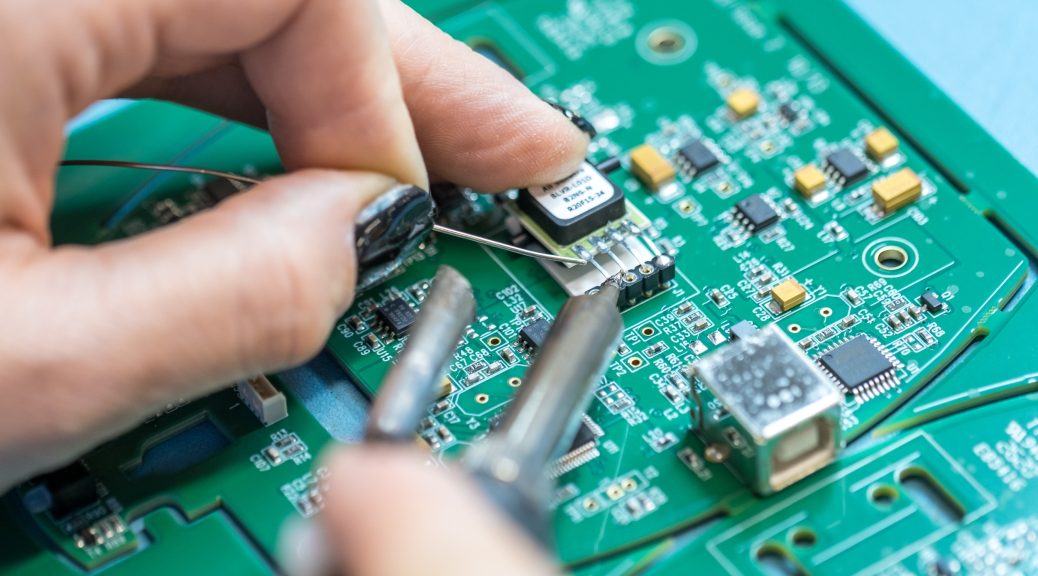
What is PCB assembly
PCB assembly is the process of installing various components onto a printed circuit board. Assembly involves the installation of components. Installation, in turn, is of three types:
- SMT (surface mount technology) – surface mounting
- THT (Through hole technology), output mounting
- THT + SMT – lead + surface mount (mixed)
With surface mounting, electronic components are attached directly to the board on one or both sides. With soldering, component pins are soldered to the traces of the board without them going through the board. As a result, it turns out to maximize the working area where electronic components will be attached to the printed circuit board assembly.
In push-to-mount wiring, the components are fixed in plated holes on the board. Contacts are soldered to these holes and securely fastened. The main feature is that the THT components go right through the board. Solder bumps form on the reverse side of the board.
THT editing has certain disadvantages:
- THT components tend to be large and heavy
- The board requires preliminary preparation (plating of solder holes)
- Despite the disadvantages, often without THT components and, accordingly, THT installation is indispensable.
- Mixed mounting is a combination of output and surface mounting.
After assembling the printed circuit boards, one of the above methods is flushed with special liquids. It washes away residual flux, which keeps the board in contact with the coating, and also gives a great look.
After this procedure, they check for performance and cover with layers of protective varnish, which increases strength, improves heat transfer and prevents moisture from affecting the board. At the last stage, the finished board is tested, as well as full quality control, which will be carried out by the specialists of our company by all standards and observing all indicators. The assembly of printed circuit boards is a rather complicated process, which sometimes does not do without errors and defects.